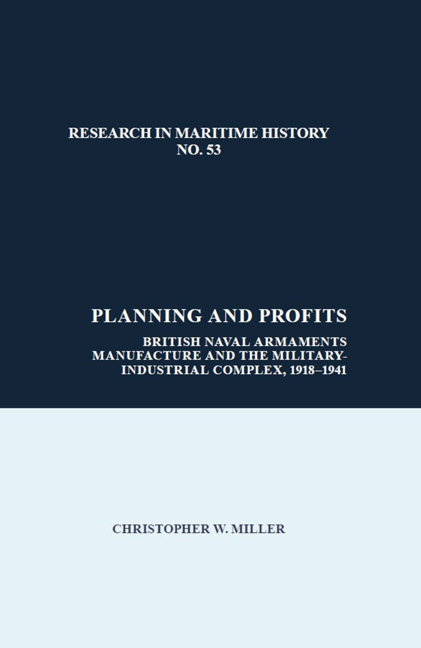 Planning and Profits
Planning and Profits Book contents
- Frontmatter
- Contents
- Acknowledgements
- About the Author
- List of Tables and Figures
- List of Illustrations
- List of Abbreviations
- A Note on Definitions
- Part One Introduction
- Part Two Industry and the Navy before Manchuria, and the Establishment of the Warshipbuilders’ Committee, 1919–1931
- Part Three The Formation of a National Government, the Far East, and the PSOC Approach to Industry, 1931–1934
- Part Four The Ultimate Potential Enemy and Rearmament Planning, 1934–1936
- Part Five The Inskip Era and War, 1936–1941
- 9 The Minister for Coordination of Defence and Early Rearmament, 1936–1937 175
- 10 Later Rearmament and War Supply Organisation, 1937–1941
- Conclusion and Retrospective
- Appendices
- Bibliography
- Index
10 - Later Rearmament and War Supply Organisation, 1937–1941
from Part Five - The Inskip Era and War, 1936–1941
- Frontmatter
- Contents
- Acknowledgements
- About the Author
- List of Tables and Figures
- List of Illustrations
- List of Abbreviations
- A Note on Definitions
- Part One Introduction
- Part Two Industry and the Navy before Manchuria, and the Establishment of the Warshipbuilders’ Committee, 1919–1931
- Part Three The Formation of a National Government, the Far East, and the PSOC Approach to Industry, 1931–1934
- Part Four The Ultimate Potential Enemy and Rearmament Planning, 1934–1936
- Part Five The Inskip Era and War, 1936–1941
- 9 The Minister for Coordination of Defence and Early Rearmament, 1936–1937 175
- 10 Later Rearmament and War Supply Organisation, 1937–1941
- Conclusion and Retrospective
- Appendices
- Bibliography
- Index
Summary
The missed opportunities before and during 1936 were painfully apparent in 1937. Inskip was certainly conscious of the supply problems that arose, but he continued the theme of taking too long to do anything about them. The issues in the naval armaments sector clearly warranted special attention and did finally prompt some badly-needed action. But the impetus did not come from Inskip. It came from the unsung former chairman of SC III, Sir Harold Brown. A naval engineer and vice admiral, Brown is not a particularly well-known figure in histories of rearmament, but he oversaw a series of innovations in the second half of 1937 and into 1938 that better utilised industrial expertise and finally overcame the barriers to progress that had slowed the earlier work of the CID's supply planning framework. As such, the work of Brown and his colleagues cannot go unmentioned.
Brown, the Boilermakers and the Shipbuilding Consultative Committee, 1937–1938
Leading on from Lithgow's concerns over the future usage of Beardmore, Inskip was in increasingly regular contact with Brown in 1937. It will be recalled that Brown had served as the Chairman of SC III (Shipbuilding) until September 1936 and as the Director General of munitions production in the War Office. He also played a significant role in the discussions to form the Advisory Panel of Industrialists in 1933. In 1937, Brown was given latitude to work on a raft of proposals to turn over factories to armaments production, which included proposals for the restructuring of vacant space on the Clyde for gun mounting work for both the Admiralty and the War Office.
Brown was keen to put the Beardmore plants to full use, but he complained of a series of obstacles in his way which, perhaps predictably, had been raised by his own committee at Supply Board level in previous years but had not been properly rectified. In the case of Beardmore, Brown noted that the vacant Dalmuir yard had been stripped of equipment before 1933 and now required a complete re-tooling, but he found the backlog on machine tool orders to be prohibitive.
- Type
- Chapter
- Information
- Planning and ProfitsBritish Naval Armaments Manufacture and the Military-Industrial Complex, 1918–1941, pp. 198 - 216Publisher: Liverpool University PressPrint publication year: 2018


